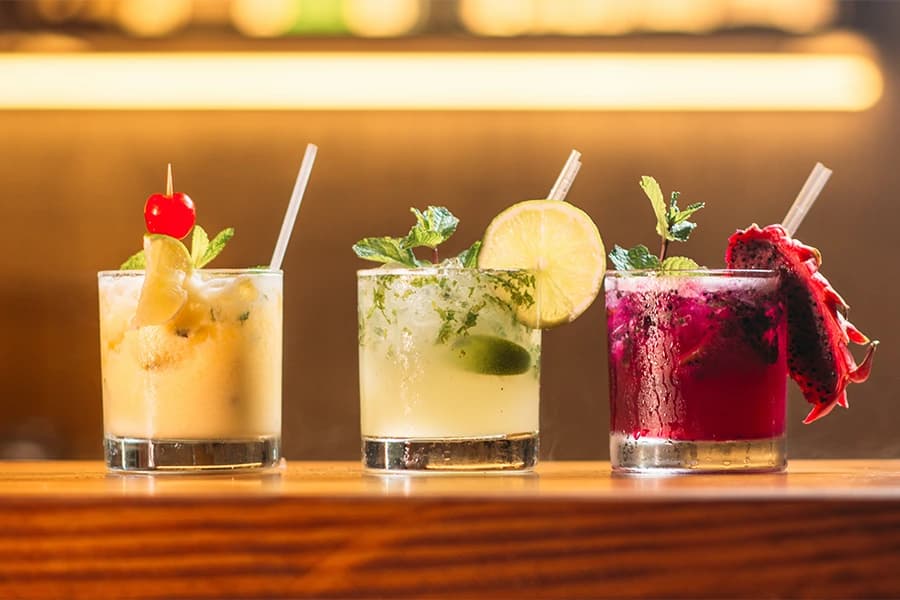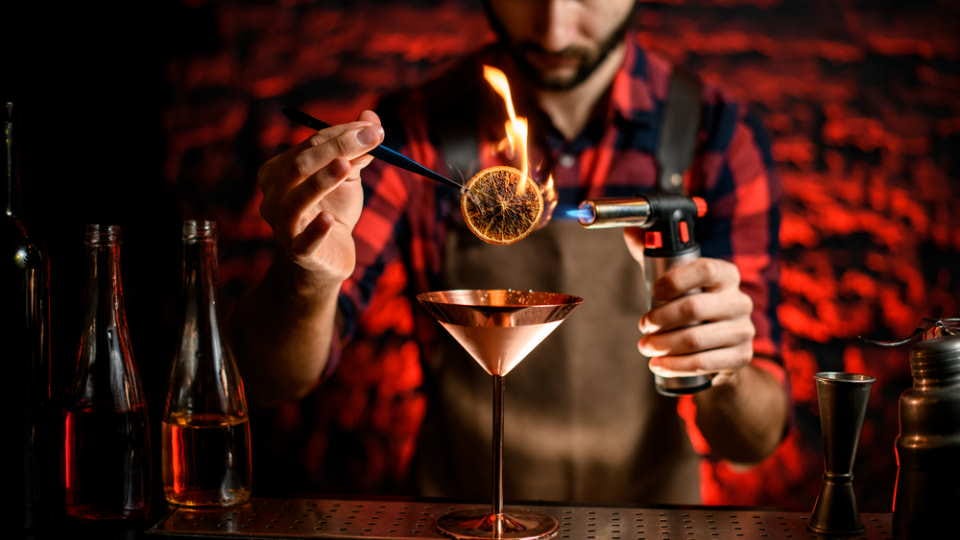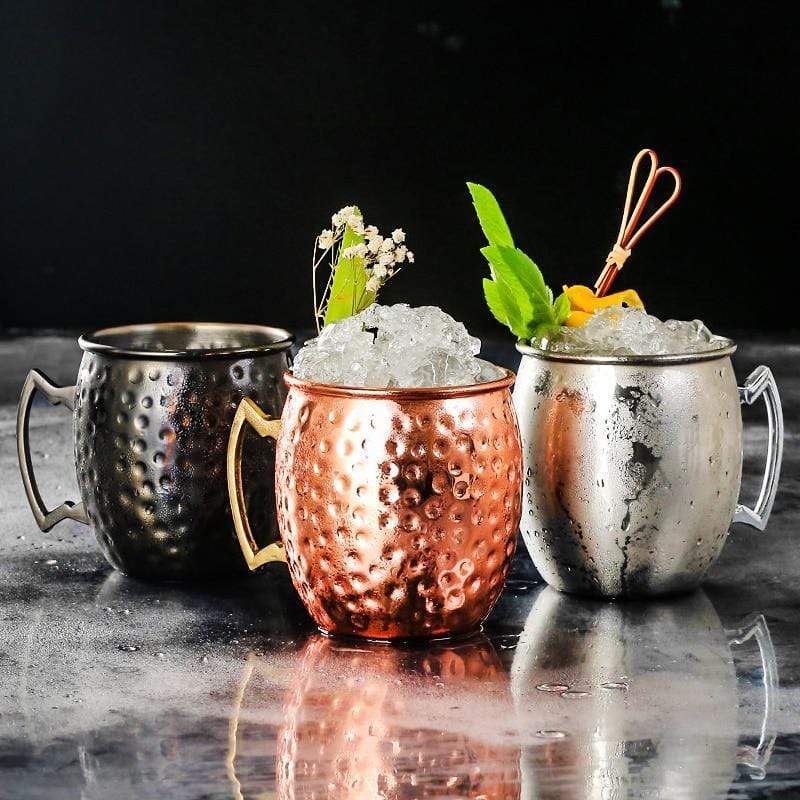The Art of Mixology: Crafting Delicious Cocktails and Mocktails
Mixology, the art and science of crafting cocktails and mocktails, is a world where creativity meets precision. It's a field that transcends simple drink-making to become a form of culinary artistry, blending flavours, textures, and aesthetics to create experiences that delight the senses. Whether you're an aspiring bartender, a cocktail enthusiast, or someone looking to elevate your home entertaining game, the world of mixology offers a fascinating journey into the realm of drinks.
What is Mixology?
Mixology is the practice of crafting cocktails and mocktails using various techniques, ingredients, and tools to achieve a balanced and flavorful drink. Unlike simply pouring a drink, mixology involves understanding the chemistry of ingredients, the interplay of flavours, and the presentation of the final product. It's about creating an experience in a glass, where each sip tells a story.
The Essence of Mixology
At its core, mixology is about balance and harmony. A well-crafted cocktail or mocktail should have a perfect blend of flavours—sweet, sour, bitter, salty, and umami. Achieving this balance requires knowledge of ingredients, an understanding of how they interact, and skill in using various techniques to manipulate these flavours.
Key Aspects of Mixology
1. Ingredients:
The foundation of any great drink starts with high-quality ingredients. Fresh fruits, herbs, premium spirits, and unique mixers are essential. Each ingredient plays a specific role in the drink, contributing to its overall flavour profile.
2. Techniques:
Mixologists employ a variety of techniques to craft their drinks. These include shaking, stirring, muddling, and layering. Each technique has its purpose, whether it's to chill the drink, blend flavours, or create a visually appealing presentation.
3. Tools:
The right tools are crucial for a mixologist. Shakers, strainers, muddlers, jiggers, and bar spoons are just a few of the essential tools used in the craft. These tools help ensure precision and consistency in drink-making.
4. Presentation:
A drink's presentation can elevate the drinking experience. Garnishes, glassware, and even the temperature of the drink play a role in how it's perceived. A well-garnished cocktail not only looks appealing but also enhances the drink's aroma and flavour.
The Journey of Mixology
Mixology has a rich history that dates back centuries. The art of mixology has continually evolved from the classic cocktails of the Prohibition era to the modern craft cocktail movement. Let's take a brief journey through its history.
Early Beginnings
The origins of mixology can be traced back to the 19th century when cocktails began to gain popularity. Bartenders of the time started experimenting with spirits, bitters, and other ingredients to create new and exciting drinks. One of the earliest recorded cocktails is the Sazerac, which dates back to the early 1800s.
Prohibition Era
The Prohibition era (1920-1933) was a significant period for mixology. With the sale of alcohol banned in the United States, speakeasies emerged, and bartenders had to get creative with their concoctions. This era gave birth to many classic cocktails, such as the Martini, the Old Fashioned, and the Manhattan.
Modern Craft Cocktail Movement
The late 20th and early 21st centuries saw the rise of the craft cocktail movement. Mixologists began to focus on quality ingredients, innovative techniques, and artisanal spirits. This period also saw a resurgence of interest in forgotten classic cocktails and the creation of new, contemporary drinks.
Crafting Cocktails: Tips and Techniques
Creating a delicious cocktail involves more than just following a recipe. Here are some tips and techniques to help you master the art of mixology.
1. Understanding Flavors
To craft a well-balanced cocktail, it's essential to understand the basic flavour profiles:
Sweet:
Sugar, syrups, and liqueurs add sweetness to a drink. Use them to balance out sour or bitter flavours.
Sour:
Citrus fruits like lemons, limes, and grapefruits provide acidity. They add a refreshing tang to cocktails.
Bitter:
Bitters, tonic water, and certain herbs contribute to bitterness. Bitterness can add complexity and depth to a drink.
Salty:
A pinch of salt can enhance other flavours. It's often used in cocktails like the Margarita.
Umami:
Ingredients like tomato juice, soy sauce, and certain herbs can add a savoury element to cocktails.
2. Balancing Ingredients
A great cocktail is all about balance. Here are some classic ratios to help you get started:
Sours:
2 parts spirit, 1 part sour (citrus), 1 part sweet (syrup)
Old Fashioned:
2 parts spirit, 1/4 part sweet, 2 dashes bitters
Highballs:
1 part spirit, 2-3 parts mixer (like soda or tonic)
3. Techniques to Master
Shaking:
Use a shaker to mix drinks that contain juices, syrups, and cream. Shaking chills and dilutes the drink while blending the ingredients thoroughly.
Stirring:
Stir drinks that are all spirits, like the Martini or Manhattan. Stirring gently mixes the ingredients without over-diluting them.
Muddling:
Use a muddler to crush fruits, herbs, or spices in the bottom of a glass. This releases their flavours into the drink.
Layering:
For visually stunning cocktails, layer ingredients by pouring them slowly over the back of a spoon. This works well for drinks like the Pousse Café.
4. Presentation Matters
The way a cocktail looks can enhance the drinking experience. Here are some presentation tips:
Glassware:
Choose the right glass for the drink. A Martini glass for a Martini, a rocks glass for an Old Fashioned, etc.
Garnishes:
Use garnishes to add visual appeal and aroma. Citrus twists, fresh herbs, and edible flowers are popular choices.
Ice:
Ice can affect the taste and dilution of a cocktail. Use large ice cubes or spheres for slow dilution in spirit-forward drinks. Crushed ice works well for tropical or refreshing cocktails.
Crafting Mocktails: Non-Alcoholic Delights
Mocktails, or non-alcoholic cocktails, have become increasingly popular. They offer the same complexity and enjoyment as cocktails without the alcohol. Here are some tips for crafting delicious mocktails:
1. Use Quality Ingredients
Just like cocktails, mocktails benefit from fresh, high-quality ingredients. Use fresh fruits, herbs, and high-quality mixers to create vibrant flavours.
2. Experiment with Flavors
Don't be afraid to get creative with mocktails. Use a variety of ingredients to build complex flavours. Herbal teas, flavoured syrups, and fresh juices can add depth and interest.
3. Pay Attention to Presentation
Mocktails should be just as visually appealing as cocktails. Use garnishes, colourful ingredients, and interesting glassware to make them look special.
4. Balance is Key
Even without alcohol, balance is crucial. Use the same principles of sweet, sour, bitter, and salty to create a well-rounded drink.
Anecdotes and Personal Experiences
One of the joys of mixology is the stories and experiences that come with it. Here are a few anecdotes to illustrate the magic of mixology:
The Perfect Martini
I remember my first attempt at making a classic Martini. I was at a friend's housewarming party, and I decided to play bartender for the evening. With a shaky hand, I mixed gin and vermouth, stirred gently, and strained it into a chilled glass. I garnished it with a lemon twist and handed it to my friend. The smile on their face as they took the first sip was priceless. It was a simple drink, but the balance of flavours and the crisp, cold presentation made it special.
The Experiment Gone Right
Another time, I was experimenting with ingredients in my kitchen. I had some fresh basil and strawberries on hand, so I decided to create a new cocktail. I muddled the basil and strawberries, added some lemon juice, simple syrup, and gin, and shook it all together. The result was a refreshing and aromatic cocktail that quickly became a favourite among my friends. It was a reminder that sometimes, the best drinks come from experimentation and a willingness to try new things.
Conclusion
The art of mixology is a journey of discovery, creativity, and enjoyment. It's about understanding the balance of flavours, mastering techniques, and presenting drinks that delight the senses. Whether you're crafting a classic cocktail, inventing a new creation, or making a delightful mocktail, mixology offers endless possibilities. So, grab your shaker, gather your ingredients, and embark on the fascinating world of mixology. Cheers to crafting delicious cocktails and mocktails that tell a story with every sip!
Mixology isn't just about the drink in the glass; it's about the experience, the stories, and the shared moments that come with it. As you delve deeper into this art, you'll find that every cocktail or mocktail you create has the potential to become a memorable part of your life and the lives of those you share it with. So, here's to the art of mixology—may your drinks be balanced, your techniques precise, and your experiences unforgettable. Cheers!







Comments
Post a Comment